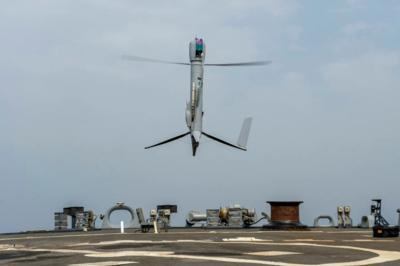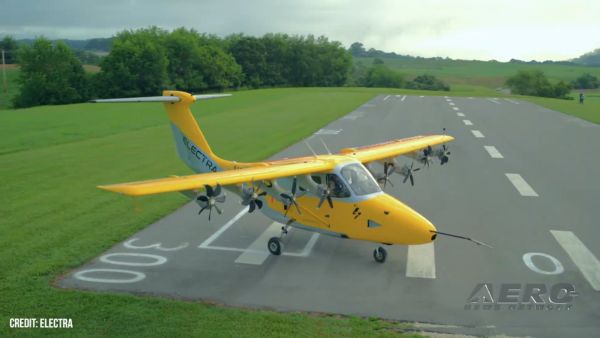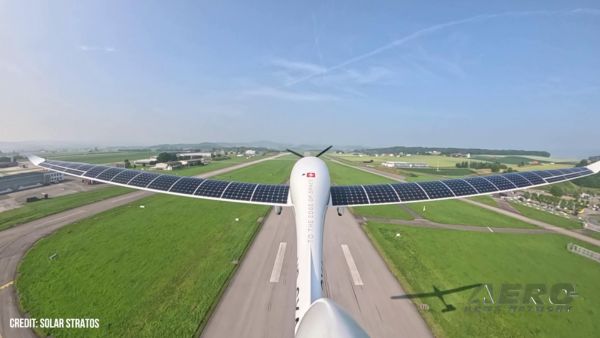Sat, Jul 12, 2025
Set to Become a Key Surveillance Asset, the Flexrotor Offers Eyes in the Sky
The New Partnership between Drone Forge and Airbus, set to introduce the Flexrotor drone, isn’t just a routine industry move, it’s a sign of where the future of drones is headed.

What makes this especially exciting is how it reflects a more broad transformation in how drones are being designed, deployed, and supported. The Flexrotor, for example, combines the best of both worlds: the ability to take off and land vertically like a helicopter, and the endurance of a fixed-wing aircraft. Meaning it can operate in tight spaces, on ships, or in rugged terrain, yet stay airborne for over 12 hours.
Even more interesting is the regional focus. By anchoring operations in the Asia-Pacific and opening a support center in Western Australia, Airbus and Drone Forge are signaling that the global drone industry is becoming more decentralized. Innovation and deployment aren’t just coming from Silicon Valley or Europe anymore. Companies with specialized needs are becoming major players. That’s important because it indicates that drones are being tailored for real-world missions such as brushfire monitoring, illegal fishing surveillance, or search and rescue in vast coastal zones. The general public may think it’s a bit intrusive but, if you’re not doing anything illegal or wrong, this could be a great addition to the industry.
Then there’s the business angle: this deal shows how smaller companies like Drone Forge can drive above their weight by teaming up with large aerospace companies. These partnerships fuse innovation-driven agility with the infrastructure of large corporations, which is crucial as drones are no longer just experimental tools. They’re becoming frontline assets in defense, disaster response, and civil law enforcement. In terms of pilots that are already employed for said roles, it could hurt the job market. That being said, it could benefit in ways such as not risking the lives of humans during wildfires that are too dangerous. The drone industry is attempting to shift to long-term, integrated solutions. “We are fully convinced that the Flexrotor, built on a strong engineering heritage, will allow us to tap into new markets with a proven solution where real-time intelligence, mission flexibility and reliability matters,” said Thomas Symes, Chief Executive Officer of Drone
Forge.
More News
Contributing To The Accident Was (Pilot's) Impairment From The Effects Of Alcohol Consumption Analysis: The pilot departed an unknown airstrip and made an emergency landing at a US>[...]
Aero Linx: B-17 Alliance Foundation Serving as a service station canopy in Milwaukie, Oregon for over 67 years, the WWII B-17G Flying Fortress now known as the “Lacey Lady&rd>[...]
“The Unlimited Class is one of our most iconic, so we are obviously disappointed. While they won’t be able to join us for our inaugural year in Roswell, we look forward>[...]
Outer Fix A general term used within ATC to describe fixes in the terminal area, other than the final approach fix. Aircraft are normally cleared to these fixes by an Air Route Tra>[...]
Also: iFly EFB, World Skydiving Day, Air Avionics, Two New CubCrafters Kits After a master strategy meeting this past week on the grounds of the Sun n Fun Aerospace Expo campus, de>[...]
 NTSB Final Report: Stinson 108
NTSB Final Report: Stinson 108 ANN's Daily Aero-Linx (08.17.25)
ANN's Daily Aero-Linx (08.17.25) Aero-News: Quote of the Day (08.17.25)
Aero-News: Quote of the Day (08.17.25) ANN's Daily Aero-Term (08.17.25): Outer Fix
ANN's Daily Aero-Term (08.17.25): Outer Fix Airborne Affordable Flyers 08.14.25: Affordable Flying Expo, RV15 Kit, Spirit V2
Airborne Affordable Flyers 08.14.25: Affordable Flying Expo, RV15 Kit, Spirit V2



